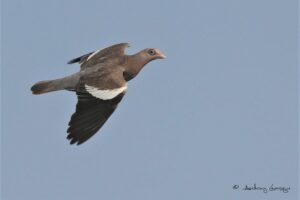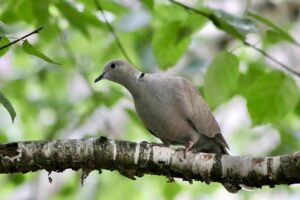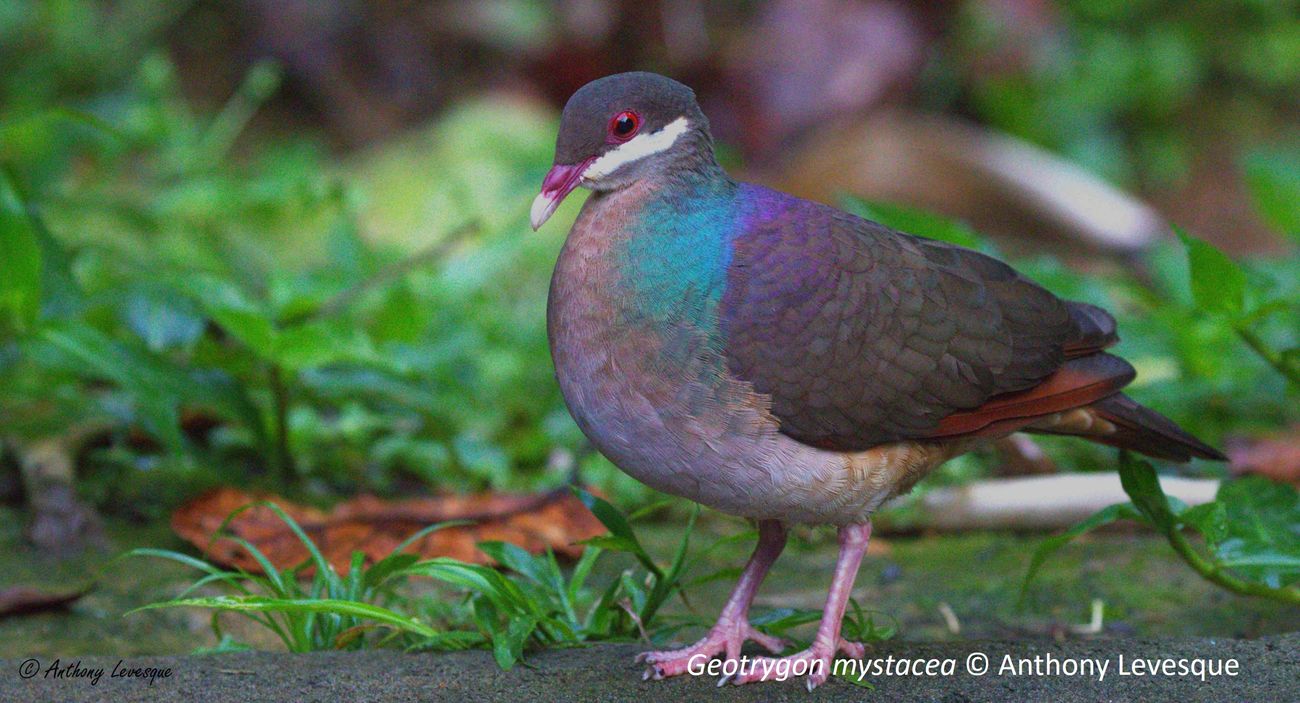Biodiversity loss is one of the greatest challenges facing our planet today. While the importance of populations decline or their extinction risk vary greatly between species and territories, understanding the factors that influence both parameters is essential to directing conservation efforts effectively.
The Colombidae, commonly known as pigeons and doves, represent one of the most diverse bird families. With around 370 recorded species, they inhabit a wide variety of habitats on every continent except Antarctica. In addition to their high heritage value, they also play a crucial role in ecosystems, in particular through seed dispersal. Apart from a few particularly common species, especially in urban environments, Columbids remain largely unknown, both in terms of their ecology and the precise threats to their conservation.

Bare-eyed pigeon © Anthony Levesque
Filling important gaps in our knowledge, several specialists have just published the first quantitative synthesis of the parameters influencing the conservation of these birds. Using an innovative statistical tool known as random forests, the researchers studied the importance of many parameters on the risk of extinction of different species, but also those which explain why certain populations tend to increase or decline.
The results indicate that the extinction risk of pigeons and doves is strongly dependent on the size of their distribution range. Species living in restricted geographical areas, and particularly those living on islands far from continents and at low altitude, have a higher risk of extinction. The presence of invasive exotic mammals, such as rats and cats, is also an important factor.
While these results are important for deciding on priorities for the study and conservation of these species, the authors went further and analyzed the attention received by the species from scientists. The results show that the most threatened species are also the least studied. This seemingly paradoxical result can be explained by the disparity in human and material resources in the different parts of the globe. While scientific capacity is concentrated in the northern hemisphere, endangered species live mainly in the southern hemisphere. Unfortunately, this lack of expertise has direct consequences for species conservation: the probability that the risk of extinction will be incorrectly assessed increases for species that have been little studied.

Eurasian collared dove
The study provides a better understanding of the levers on which to act to preserve pigeon and dove species. In particular, while conservation measures are largely based on hunting restrictions, other levers could be far more effective. Acting to limit the impact of invasive exotic mammals is one of them. On the other hand, the study underlines the need to develop scientific skills in areas of high biodiversity. A need that is in line with the main mission of Caribaea Initiative: to develop a network of researchers throughout the Caribbean, one of the world’s major biodiversity hotspots.
Reference
Cambrone, C., Jean-Pierre, A., Bezault, E. & Cézilly, F. (2023). Identifying global research and conservation priorities for Columbidae: a quantitative approach using random forest models. Frontiers in Ecology and Evolution 11, doi: 10.3389/fevo.2023.1141072.
About the authors
Christopher Cambrone and Aurélie Jean-Pierre both chose to study the Colombidae for their doctoral work, carried out with the support of the Caribaea Initiative. After defending his thesis, Christopher is now coordinator of scientific projects for the association, while Aurélie Jean-Pierre is continuing her doctoral research.

